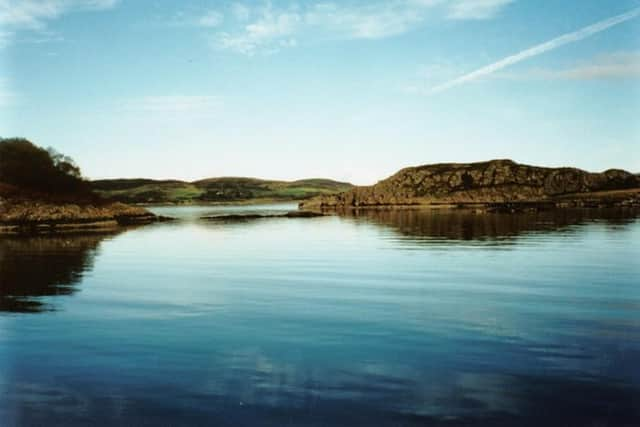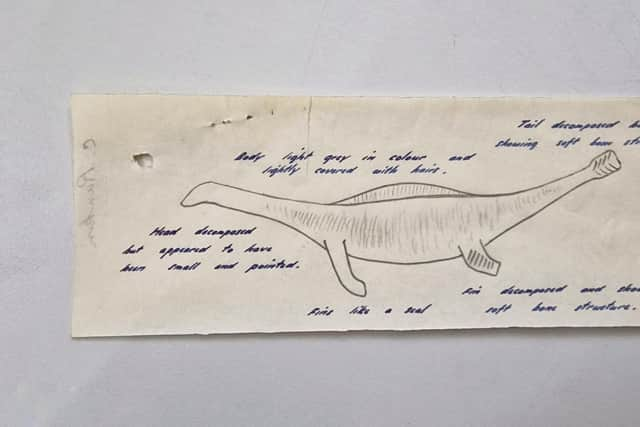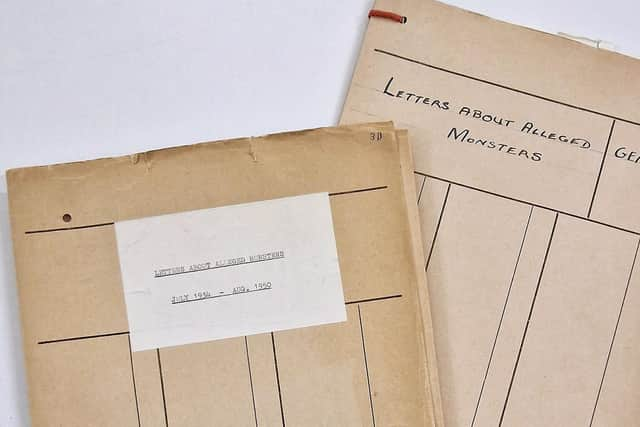Inside the nation's Monster Files - the catalogue of strange sightings kept my museum keepers
The ‘Monster Files’ can be found deep in the library of the National Museum of Scotland, where “folder after folder” contains witness accounts of unsettling encounters in the country’s mountain ranges, deep water lochs and dense woodland.
Originally kept by the keepers of the Natural Sciences department, the files contain letters written by seemingly baffled – and in some cases seemingly shaken – citizens who have contacted museum keepers in a search for information.
Advertisement
Hide AdAdvertisement
Hide AdSometimes included are little sketches of the curious cryptids – creatures which some believe may exist somewhere in the wild but are discounted by mainstream science.


The Black Dog of Lochbuie, a phantom creature said to roam around Lochbuie on Mull, is mentioned in the files as is the Stronsay Beast, a serpentine creature first sighted in September 1808 lying on rocks at Rothiesholm Head to the south east of the Orkney isle. Some accounts have described it as having a long, eel-like neck and three pairs of legs.
The papers date largely from to the 1930s to 1950s, with one file including an unspecified ‘monster hair’.
Details of a sighting of a sea serpent spotted at Loch Craignish near Jura recently emerged in an article written by staff at NMS.
A letter written in 1950 to the Dr Stephen, Keeper of the Natural History Department, came from a man who – along with two friends – witnessed a strange creature in the water, opposite the Gulf of Corrievreckan.


The letter, written by a former merchant seaman, said: “It was just after sunset, and the evening was calm without any wind to ruffle the surface of the water. There was little or no swell and the sea was smooth. Suddenly, about 30 to 40 yards away, a creature resembling a “sea serpent” appeared on the surface. Its head was about half the size of a seal’s head...”
The “coil” of the creature’s body rose above the water, with the serpent said to be at least seven feet long. After disappearing, it emerged again, with two coils of the body on show and its head stretched forward like a snake. Later, it wagged its flat tail from side to side.
Dr Stephen, in his response, said he was unable to identify the creature described.


Advertisement
Hide AdAdvertisement
Hide AdHe wrote: “I do not think they will prove to be any relics of the past, but of course there are still creatures in the sea we do not know about. It is possible the creatures you describe are some deep-sea fish like the Muraeid Eel.”
Dr Stephen said conditions in the Atlantic had been “quite abnormal” for a number of years with a number of rare creatures emerging in Scottish waters, including the Mexican Turtle and two species of Giant Squid.
Sightings of the Loch Ness Monster are held in a file marked “confidential material” with the mysterious beast still attracting attention.
The last alleged spotting was logged with the Loch Ness Monster Sightings Register on March 23 but had to be removed after it turned out the two black shapes on the water was a pair of paddle boarders.
